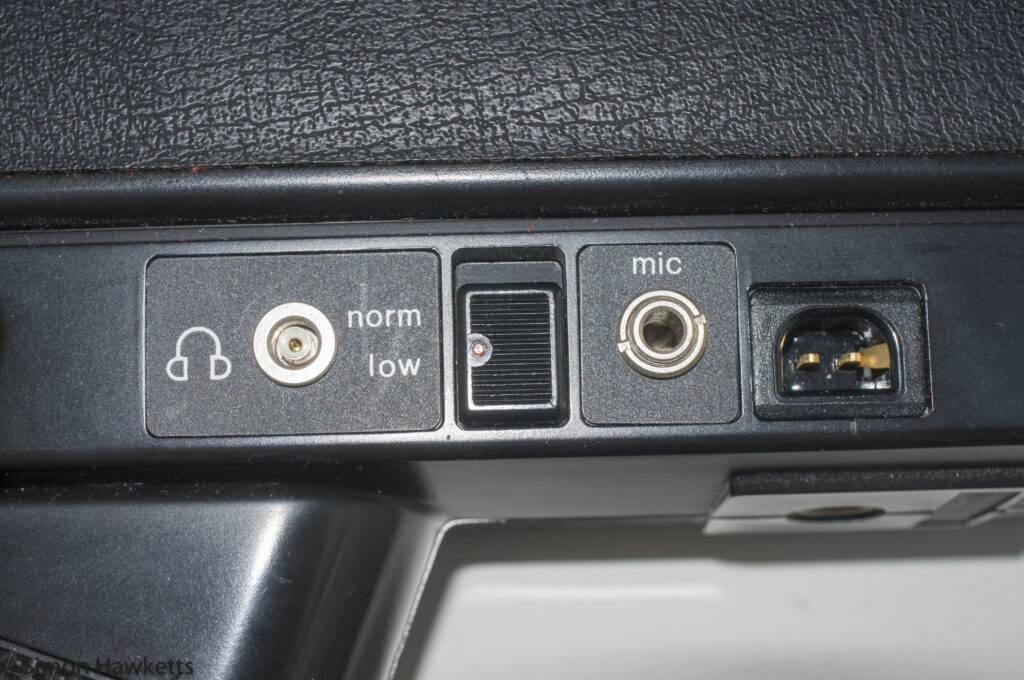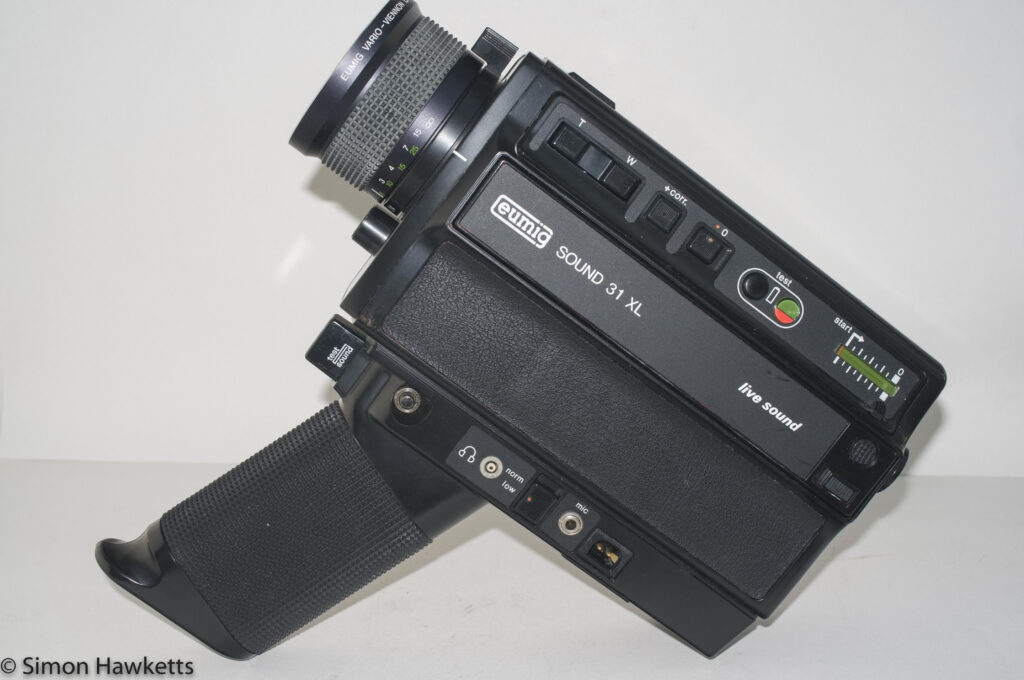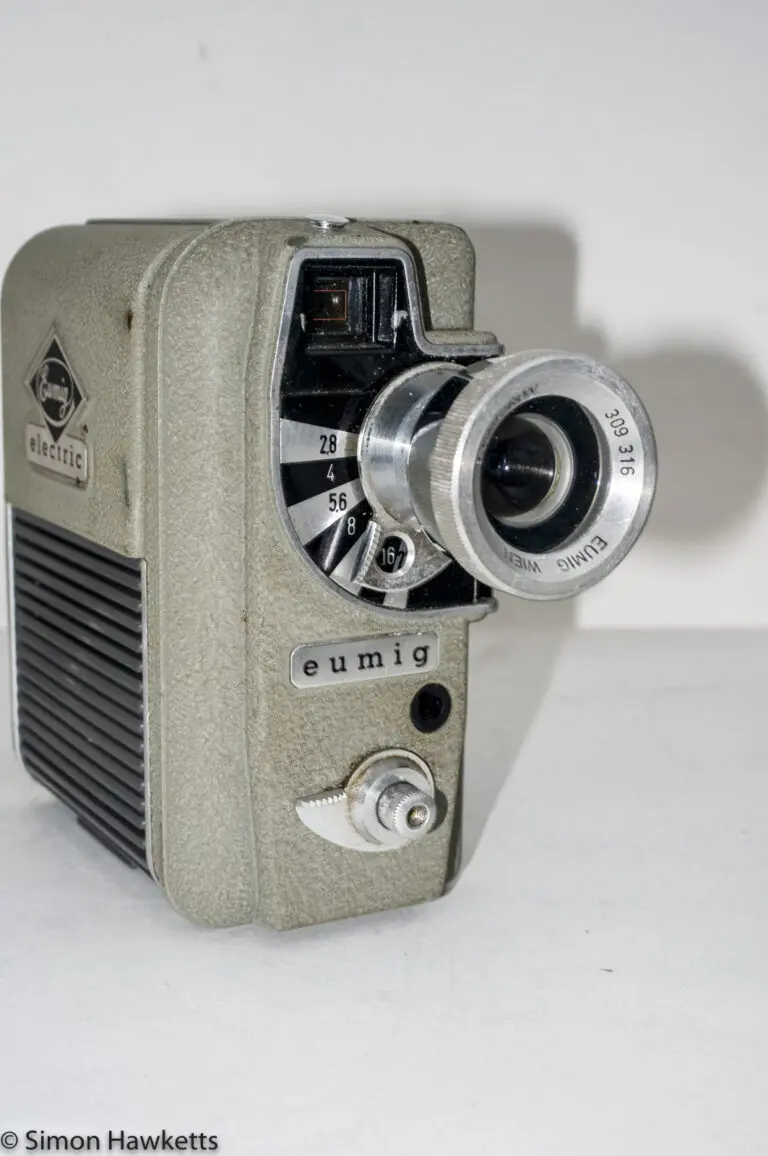Eumig Sound 31 XL Super 8mm cine camera
This is a descriptive review of the Eumig Sound 31 XL Super 8 mm sound cine camera, which is a battery powered camera which takes super 8 mm cartridge film and is equipped with an 8.5 to 24 mm zoom lens.
Eumig Sound 31 XL Images











My Eumig 31 XL Camera
I bought this camera for £5 in an eBay sale because I had the idea of attempting to recreate some of the 8 mm films my father used to take when my Brother, Sister and I were growing up. Recreate in the sense of taking film of my family I mean; whether I will actually do this I don’t know because I’m not sure if the Super 8 film available these days would actually still fit in the Eumig sound 31 xl, and anyway the price is quite prohibitive. It is certainly true to say that the look I would achieve would not be the same because he used to use Kodachrome, which has not been available since about 2010?
For my £5, I received a camera in pretty good physical condition. The battery compartment was clean and when I fitted 6 new AA batteries it sprang to life and seems to be working as expected. Although I can’t actually put a film through it, the exposure meter responds to light correctly and the motor works at different speeds when I set the frame rate switch to its two positions, so I’m fairly sure it is working properly.
As I said above, this is a Super 8 camera which has advantages over standard 8 which my father used. In standard 8 the camera actually shoots a film which is 16 mm wide but only exposes one-half of it. At the end of the reel, the film is removed from the camera and put back in the other way up and then run through again to expose the other half. In processing, the film is split down the middle and joined to make a film 8 mm in width.
Super 8 removes most of the complication by just exposing film which is 8 mm wide and fitted in simple to load cartridges. It also increased the actual picture area and so is capable of better results than standard 8 film.
Eumig Sound 31 XL Description
This cine camera was made in the late 1970s and was one of the models which appeared towards the end of the 8 mm home movie era. In 1982 the VHS-C tape cassette started to be used in handheld camcorders and the advantages of digital i.e. re-recordable tape and no processing meant that cine cameras very soon became yesterday’s technology.
For cine cameras of the day, this unit has a good spec and is quite small and portable. Obviously, in comparison to today’s HD or 4k camcorders, it is huge and archaic, but at the time it was good.
There is a reasonable zoom range of 8.5 to 24 mm which is about 55 to 150 mm in 35 mm full-frame equivalent focal lengths – that’s a bit low on the wide angle end, but usable in zoom terms. A nice feature of the zoom is the ability to smoothly move from one length to another using a rocker switch at the end of the camera, or it can be quickly moved with a manual zoom control as well.
The exposure system can be set to automatic or manual using a rotary control on the side of the unit, and the frame rate is switchable from 18fps to 24fps using a switch mounted on the camera’s top plate.
Because the focus on this camera is manual, the viewfinder has a split image effect, which makes setting the focus quite easy. In fact, I suspect that a manual focus is better on a cine camera than autofocus on many occasions, because one of the worst effects on cine film is watching the scene drop out of focus and then back in as the camera ‘hunts’ for the right point. The split image display is different to that found in normal 35 mm SLR cameras of the time because it is applied over the whole screen rather than in a central spot, which is actually very effective.
As well as the split focusing, the viewfinder also shows the aperture the camera is using, and an indicator of whether daylight or tungsten film is being used in the camera. There are also exposure warning lights for occasions where there is not enough light to film. The view in the viewfinder is through-the-lens, so the cinematographer sees what is going to be recorded on the film.
There is a diopter adjustment dial next to the viewfinder and a switch to blank it out completely for occasions when the camera is going to be put on a tripod and left unattended (to stop light entering via the viewfinder). I would say that if I were to be using the camera, the viewfinder is the one part I would really have trouble with; I find it really difficult to get a good view through because there is only one position where it’s possible to see the scene correctly. A move of a fraction either side of this point and the image is gone!
Since this camera records sound as well as vision, there is a headphone jack fitted and the ability to connect a separate microphone, although the only audio level control seems to be a low/norm switch to set the general level.
Camera Manual
I happen to have a copy of the manual for this camera so I’ve scanned it and added it here.
Eumig 31 xl Specifications
- Super 8 sound cine camera
- Zoom range 8.5 to 24mm manual or powered zoom
- F/1.3 to f/45 aperture range
- Manual Focus with split image effect in viewfinder
- Automatic or manual exposure.
- Exposure compensation button (called +Correction)
- Frame rate settable to 18 or 24 fps
- Powered by 6 AA batteries or external power source
- Battery test button
- Hand grip with actuation button and lock
- Headphone jack
- Microphone socket
- Diopter adjustment and viewfinder blanking switch
- Film remaining indicator
- Tripod bush on base
- Takes Super 8 film cartridge
Discover more from Everything Vintage
Subscribe to get the latest posts sent to your email.





